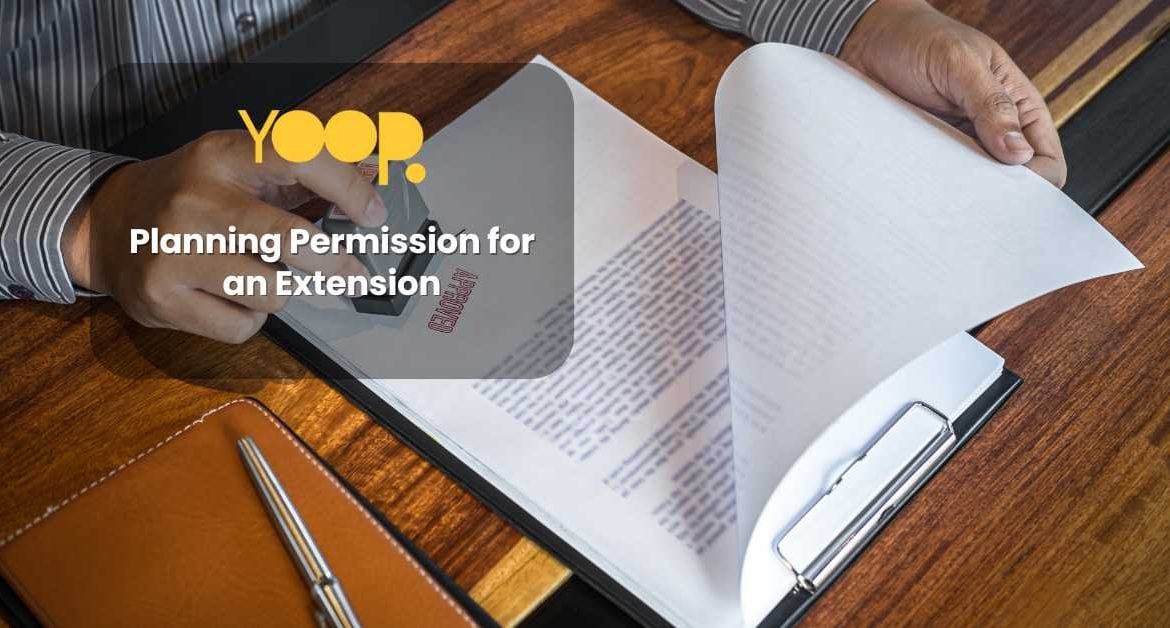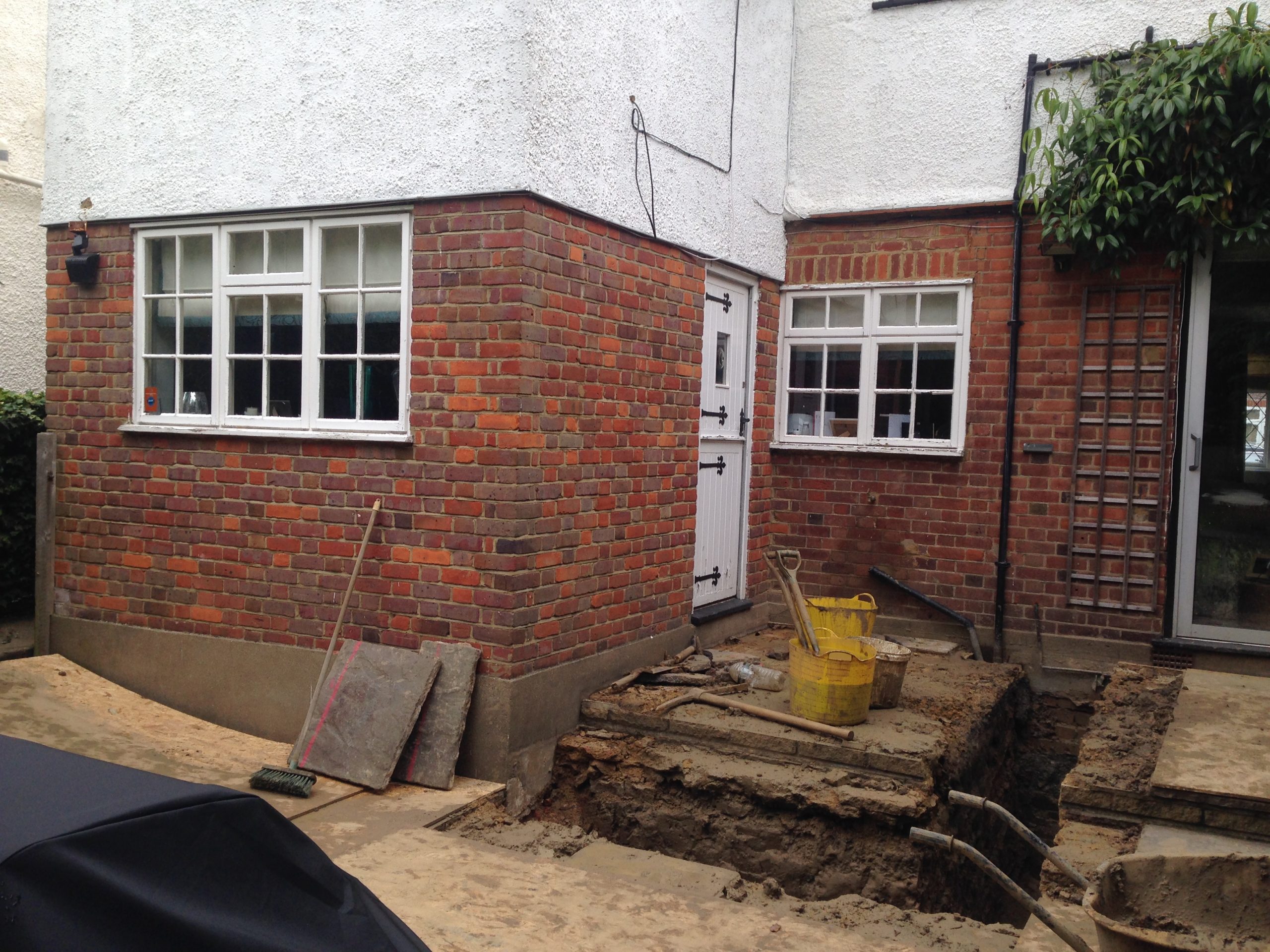
Planning Permission for an Extension
What is planning permission?
Planning permission is the process by the council, which determines whether extensions on a terraced, semi detached or detached property are lawful. So any rear extensions, side extensions, loft extensions, changes to the front porches or converting a garage are always all covered by planning permission, otherwise they will be deemed unlawful, rather than illegal. The reason that it’s unlawful is because the extension doesn’t yet have permission, but if you put in an application it would have passed.

Do I require planning permission?
Typically you require planning permission for any changes to your house. The only reason you would not require planning permission to do any extensions to your home is if the changes you are making are within the rules of permitted development.
Permitted development is an active law in the UK. Which allows a homeowner to do minor changes to their home without seeking planning approval from the council. It was brought in to free up the council from very simple extensions.
If you’re not in a conservation area, don’t have a listed building or you’re not in an area of outstanding natural beauty. Then you probably have permitted development and as long as your house is quite original and unmodified. After that you’re allowed to make various minor changes to your house without planning permission. However, you should still submit it and get a certificate of lawfulness.
Why Planning Permission is Often Advisable for Extensions
Most extensions actually require planning permission and we would suggest that you always submit to get planning permission. Or a certificate of lawfulness. The reason for this is if you start building something. Therefore, typically your neighbors will inform the local authority. This happens very, very frequently – you’d be surprised. A lot of neighbors think it’s their civic duty to do this and then. Certainly, you’ll have an issue with the enforcement team in the local authority.
Even if you think it’s permitted development and you don’t submit to get the certificate of lawfulness. Again your neighbors will see you building something and think you don’t have planning permission because they’ll go online to see if you’ve got planning approval.
So you may well be permitted to build your extension, but unless there’s any record on the council’s website. Then the enforcement team will be called. They won’t know whether it’s permitted development or not. Moreover, it will request that you either put in a planning application or certificate of lawfulness.
Permitted development is an active law in the UK, which allows a homeowner to do minor changes to their home without seeking planning approval from the council.
- Yoop Architects TWEET THIS
What single storey extensions are exempt from planning permission?
A single-storey rear extension up to 8 metres (for a detached house)/6 meters (for a semi-detached/terraced house) from the original rear of the property can be typically achieved via Permitted Development.
However, larger single-storey rear extensions are subject to the Neighbour Consultation Scheme. This means that for a single-storey rear extension between 4-8 metres for a detached house or 3-6 metres for a semi-detached/terraced house. However, your Local Planning Authority will need to be informed of the proposed work via a ‘Prior Approval’ application and your extension is subject to approval.
You can also do a side extension up to half the width of the original house.
What multiple storey extensions are exempt?
Under permitted development, you can do a double storey rear extension on a semi-detached property of 3 meters on the ground floor and 3 meters on the first floor. But all of the extensions need to be 2 meters away from each boundary. If they’re touching any other extensions. Then they probably won’t be permitted development.
We would suggest that you need to seek planning permission on this. However you can achieve a first floor rear extension on a semi-detached property or even a terraced property under permitted development. A terraced property does tend to be a bit narrower though so it is more difficult.
For a double rear extension on a detached property, you can do 3 meters on the ground floor and 3 meters on the first floor. If you were just doing the ground floor. Additionally, you could go up to 8 meters (subject to approval), but if you’re doing the double, it’s three and three.
Inside this easy to read free guide, we will teach you the key things you need to know about planning permission.
Do conservatories require planning permission?
Conservatories are usually allowed under permitted development rights. Which means that you can build a single-storey rear extension of up to 8 metres from the original rear wall of a detached house. Or up to 6 metres for any other house without needing planning permission (conservatories over 4 metres (for a detached house)/3 meters (for a semi-detached/terraced house) are subject to the Neighbour Consultation Scheme).
Does a summer house/granny annex require permission?
A summer house/granny annex can be achieved under permitted development. Furthermore, they can be quite a generous size in the rear garden. You could also build a pool house or a hobby room under permitted development. However, the installation of toilets and kitchens isn’t necessarily covered by permitted development so if it’s to be a self contained unit, then you may need to get planning permission.
Additionally, local authorities are always mindful that a self-contained building could be a separate dwelling and that would be unlawful and would not achieve planning approval or permitted development. If the building’s ancillary to the use of the house. Then that’s a different story but if the building is going to have its own kitchen and a bathroom. After that permission may not be given because the council’s looking to avoid the homeowner potentially renting the building out as a separate dwelling.
Do I need planning Approval for a garage?
Yes, it’s a structure that will either be in front of your house, beside the house or to the rear of the house. It will affect your property, your neighbors and the wider community so planning permission will be required.
How do I get planning permission?
The first step is call your local architect and your local architect should be able to give you good advice based upon the local authorities guidance and planning policies. Every borough is generally the same, but there are minor variations and sometimes it’s just half a meter here. Besides, there and slightly different policies so it’s best to get an architect who works in that borough.
At Yoop Architects, we work in about six to seven boroughs. So for example, we don’t work in south London. However, we just look after North London and north home counties because we understand those local authorities. Particularly, we deal with them all the time. Also, we know all the guidance and the policies and also generally what will be acceptable by that council.
Yoop Architects will submit a planning application on your behalf. Or you can apply for planning permission/permitted development via the Planning Portal or through your local authority. A planning permission application in England for an extension currently costs £206. An application for a Certificate of Lawfulness (Permitted Development) in England currently costs £103.
FREE EXPERT HELP TODAY
Thinking of your dream home improvement or how to start your project?
Need your planning questions answered? Talk to an expert today.
Book a FREE 20 Minute Call with one of our home improvement Architects.


